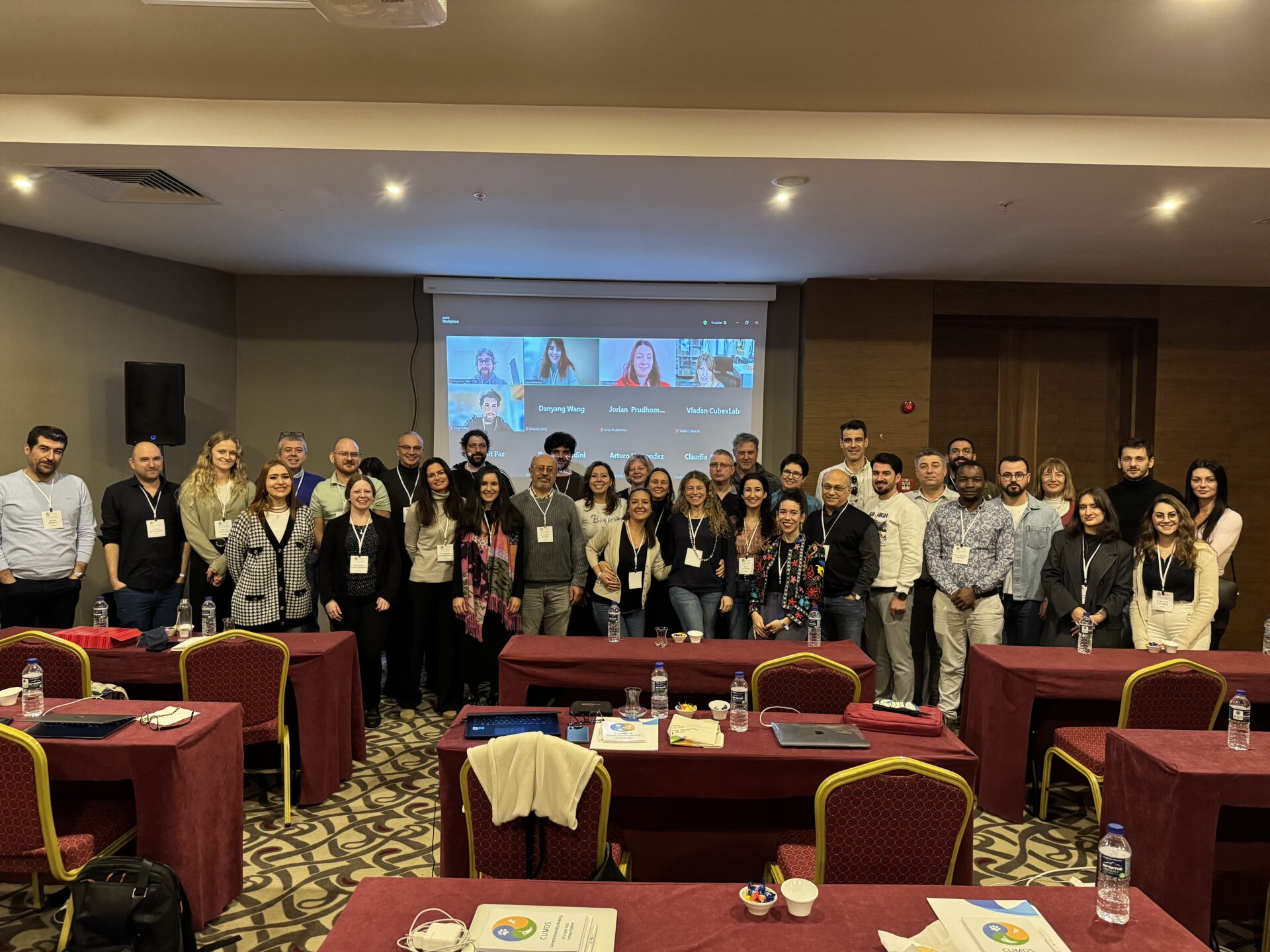March 2025. During the recent General Assembly held in Turkey and hosted by EGE University, partners presented key findings and progress in sand fly monitoring, pathogen screening, data modelling for the EWS, and public health measures for preparedness.

Sand fly monitoring 2023-2024
In Spain results revealed significant regional variation, with lower densities in the northern regions. Seasonal trends peaked in July and August, with Phlebotomus (P.) perniciosus identified as the primary vector for Leishmania. While a moderate correlation was found between canine antibody prevalence and sand fly density, dog lifestyles may play a role. Italy is focusing on sand fly identification and pathogen screening for Phlebovirus with Leishmania screening completed in two regions highlighting an active circulation of both pathogens. In Turkey, sand fly identification has been completed for 2023, with the identification of specimens collected in 2024 and pathogen screening ongoing. In Israel, sand fly identification has been completed for 2023, with the identification of specimens collected in 2024 and pathogen screening ongoing. In Austria and Germany sand fly identification is completed, and screening for Leishmania and Phleboviruses in sand flies showed negative results, while pathogen screening in dog sera is ongoing. Serbia confirmed sand fly circulation and Leishmania antibody responses in dogs, underscoring the need for expanded research in the region. Croatia had 30 species analysed with no Leishmania detected. Slovenia had 25% of analysed sand fly pools tested positive for Leishmania spp. In France, sand fly identification and pathogens screening had been completed for 2023 trapping season. Regarding 2024 season, analysis are ongoing. However, preliminary results confirmed the circulation of Phleboviruses and Leishmania parasite in France. In the Czech Republic, two seasons of field monitoring did not reveal presence of sand flies at climatically and environmentally suitable chosen localities.
Pathogen screening
Research on the effect of temperature on Leishmania (L.) development is currently underway at CUNI, with a focus on L. tropica in Phlebotomus sergenti and Ph. perniciosus, L. major in Ph. papatasi and Ph. perniciosus, and L. infantum in Ph. perniciosus and Ph. tobbi. Meanwhile, at ISS, experiments involving Ph. perfiliewi, Toscana virus (TOSV), and L. donovani are set for completion in 2025. Additionally, ongoing research explores the role of microbiota in pathogen development within vectors, including co-infections of L. infantum with Asaia spp. and TOSV.
Field trials of semiochemical lures conducted in Spain and Italy have yielded promising results. In 2023, two lures demonstrated an attractive effect, though based on a limited sample size. Further identification and analysis for the 2024 trials are in progress, leveraging a representative portion of the >30,000 sandflies collected.
Data modelling and sand fly distribution projections
PREDICTIA highlighted the integration of climate data from ERA5-Land and EURO-CORDEX for sand fly suitability modelling. Climate projections indicated that suitable habitats for sand flies are expected to expand due to climate change. Wageningen University reinforced these findings through ecological niche modelling. There was significant progress in integrating climate projections via a Web Map Service (WMS), deploying preliminary models using containerized frameworks, and implementing validation metrics to enhance model reliability.
Public health preparedness and policy integration
The CLIMOS project remains committed to translating research into actionable public health strategies. Local community engagement included 10 sessions across seven countries gathering very important input from different stakeholders on the final EWS and the development of foresight scenarios. A workshop on Risk Assessment and policymaking was organized by the Israeli Ministery of Health and the Karlsruhe Institute of Technology to identify gaps in preparedness and inconsistencies in training availability across Europe and the Mediterranean. Discussions emphasized the need for standardized training materials tailored for veterinarians, public health officials, and vector control specialists.
Trilateral led discussions on exploitation strategies, highlighting key exploitable results such as the sand fly database, early warning system platform, and trapping technology. A critical discussion on CLIMOS open data, moderated by PREDICTIA, consortium members agreed on making our results openly accessible where possible, CLIMOS is the first project of its kind, creating a standardised, climate-driven dataset on sand flies across multiple countries. Our findings will serve as a crucial foundation for future research and public health strategies.
The CLIMOS project continues to push forward with its mission to refine climate-driven vector-borne disease models, enhance sand fly monitoring, and bridge the gap between research and policy. For more information on CLIMOS and the latest project developments, please visit https://climos-project.eu/
Media contact: sandrag@f6s.com



